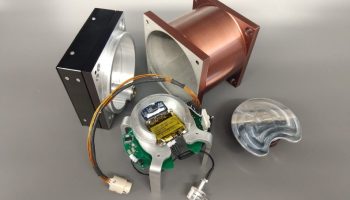SpaceX’s Dragon CRS-16 spacecraft is now on its way to the International Space Station, carrying some exciting European experiments among its cargo.
After being launched from Cape Canaveral Air Force Station in Florida, USA at 16:16 GMT on 5 December 2018, the supply vehicle is now circling Earth and will be grappled and berthed by the Space Station’s robotic arm on Saturday 8 December.
ESA astronaut Alexander Gerst, alongside crewmates Serena Auñón-Chancellor and Anne McClain, are lined up to catch this Dragon. And you can watch all the action live via NASA television from 12:30 GMT.
As partner for the International Space Station, ESA cargo is usually included in the roster of all supply spacecraft.
One highlight for the United Kingdom this time around is the Molecular Muscle Experiment. Thousands of live worms will be studied on board the Space Station to better understand how muscles cope with life in space. You can find an in-depth look at this experiment on the ESA website.
The launch also saw the second batch of commercial experiments make its way to the European Columbus laboratory. This includes a cubic greenhouse sent by the International Space University.
The experiment will grow wild and transgenic plants for observation and comparison, with researchers particularly interested in chemically induced protein expression in low-gravity. Called Hydra-1 the greenhouse will nurture seeds into life with an in-built water reservoir. Cameras will record growth over two weeks. Hydra-1 is scheduled to return to Earth in January for an in-depth analysis of the plants’ DNA.
The experiment makes use of new European commercial access to low-Earth orbit with ICE Cubes service that offers discounts for educational centres. Find out more on their website about how you could have your experiment in space in less than a year!

ESA astronaut Thomas Pesquet displaying Fluidics tanks during his 2016 Proxima mission. Credits: ESA/NASA
New tanks for Fluidics
The Fluidics experiment looks at how fluids behave in space and is set to receive two new tanks for further research. The experiment consists of three small transparent spheres in a centrifuge. One sphere holds water for the wave-turbulence research; the other two carry a special liquid with low viscosity and little surface tension for sloshing.
Cables and parts
Anybody who has tinkered with the credit-card-sized Raspberry Pi computer will know that a good power supply is important for smooth operations. The educational AstroPis on the International Space Station will be receiving four new power supply cables in varying length – colour coded for ease of use.
The Airway Monitoring experiment looks at lung health in astronauts and uses the Quest airlock in the Space Station for scientific research by lowering the pressure in the module and observing how much nitrogen oxide astronauts exhale. This experiment will also receive a bit of a boost, with the Dragon cargo craft bringing two new cartridges to continue its operation.

ESA astronaut Alexander Gerst participates in the Airways Monitoring experiment aboard the International Space Station.
Credit: A. Gerst, ESA







Discussion: no comments